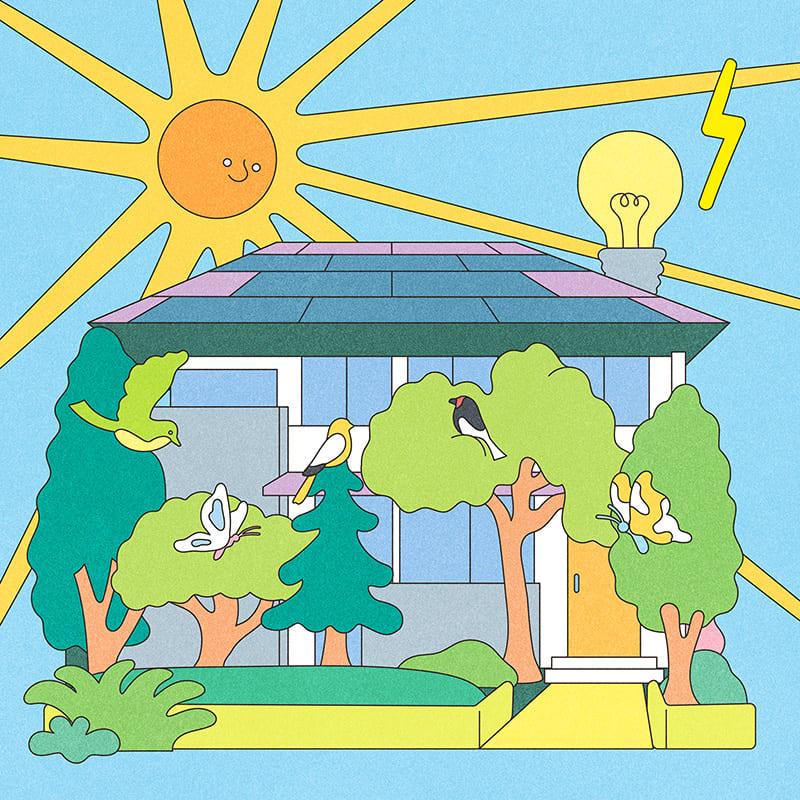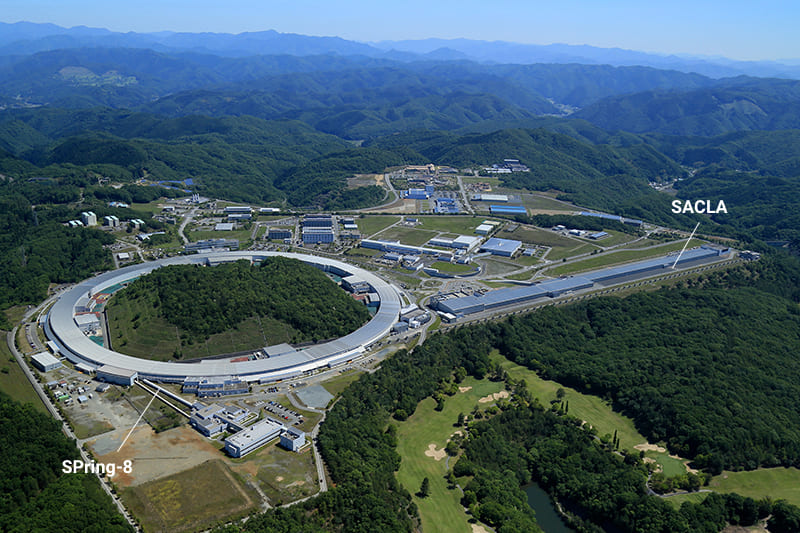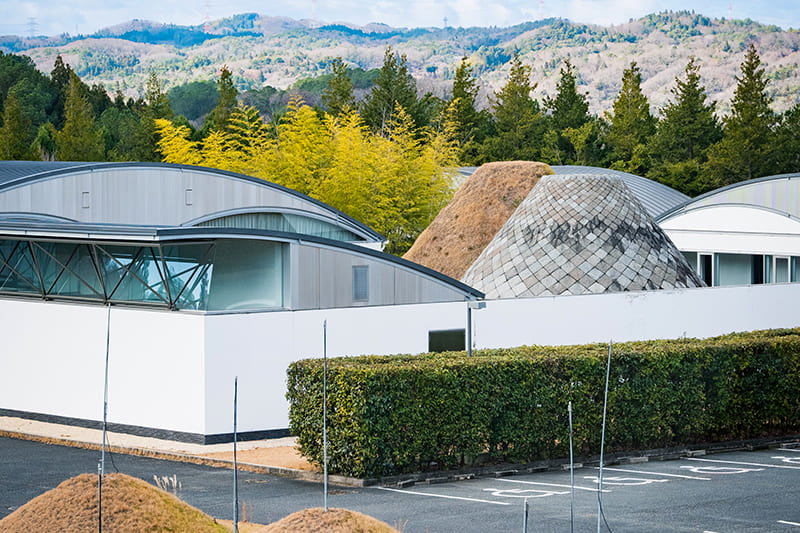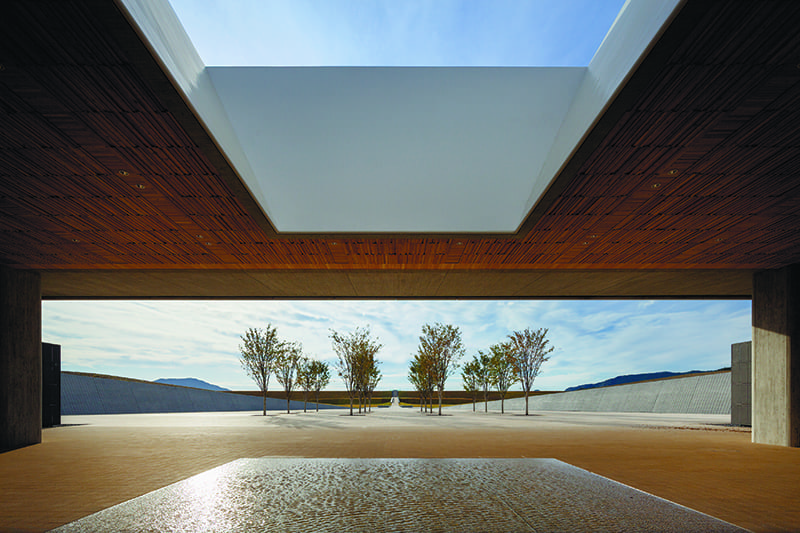February 24, 2023
Global research facility could change Tohoku
ILC PROJECT
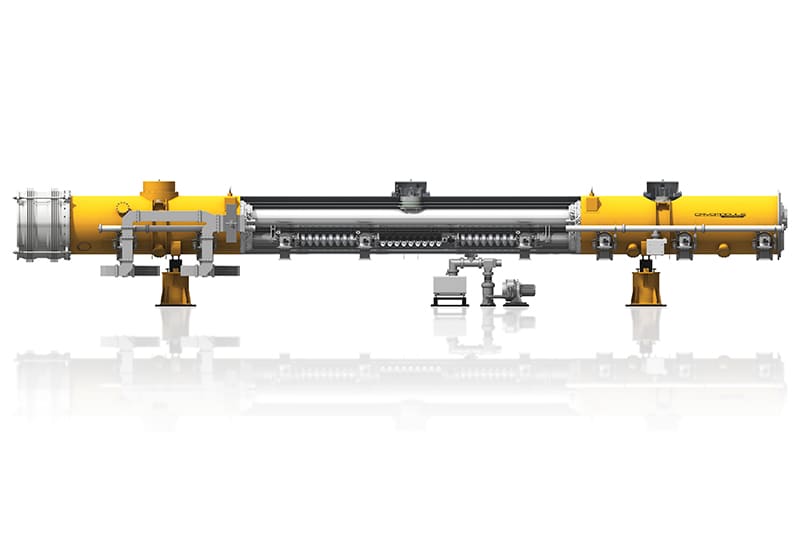
© REY.HORI / KEK
The Kitakami Mountains in the Tohoku region stretch for about 260 kilometers, mostly within Iwate Prefecture. At the moment few people outside of Japan know about them, but if a planned research facility goes ahead, they could be thrust to the fore of international science. In the coming years, the International Linear Collider (ILC) might be built 100 meters underground in the mountains. When we hear the term “accelerator,” we are likely to think of the Large Hadron Collider (LHC) at CERN (the European Organization for Nuclear Research) near Geneva, Switzerland. But while the LHC is circular, with a circumference of 27 km, the ILC planned for Tohoku is linear, extending for 20 km.
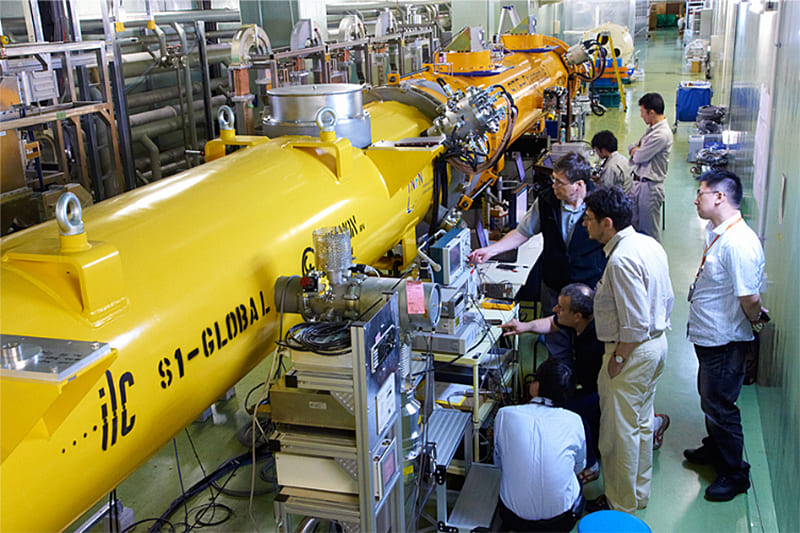
COURTESY:KEK
One of the purposes of the ILC is to explore unknown elementary particles and solve the mysteries of the origin of the universe. Electrons and positrons will be accelerated to nearly the speed of light using electric and magnetic forces, and then be made to collide head-on. The electrons and positrons will be destroyed, leaving a mass of energy similar to the conditions that existed just one-trillionth of a second after the creation of the universe. This reproduction of the Big Bang will make it possible to observe various particles, including the Higgs boson, and through those observations, we might be able to understand how the universe and matter were born.
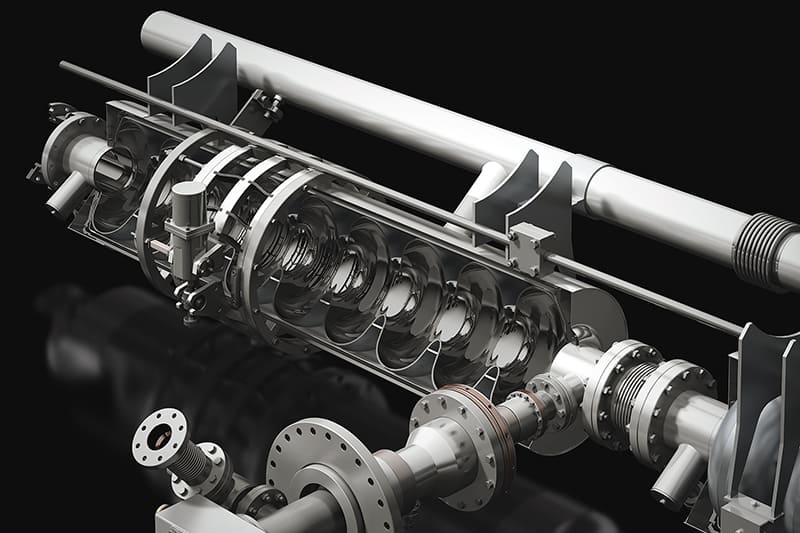
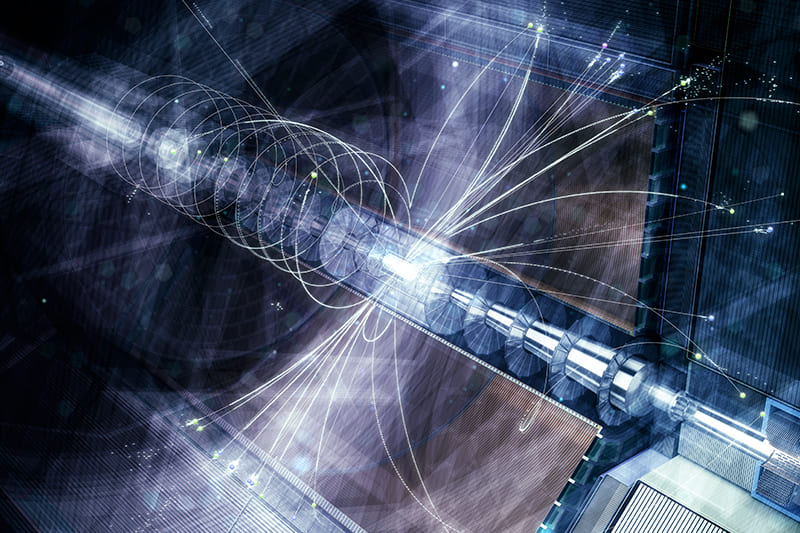
The 20-km-long linear accelerator would smash together elementary particles at nearly the speed of light, creating conditions like those in the first instants of the Big Bang.
© REY.HORI / KEK
The ILC project was originally launched in 2004. The International Committee for Future Accelerators (ICFA), which is made up of scientists from various countries, agreed to build the ILC as an international cooperative effort, and so began selecting candidate sites. At the time, several sites were considered besides Japan, including Switzerland and the United States. In Japan, Kyushu’s Sefuri Mountains and Kitakami Mountains were considered. Then in 2011, Iwate Prefecture included the ILC plan as a medium-term initiative to support new manufacturing industries as part of its Great East Japan Earthquake recovery plan. After a while, other candidate sites dropped out due to various economic and political circumstances, and in 2013, after geological surveys and appraisals of living environments for researchers were conducted, the site candidates were narrowed to just one: the Kitakami Mountains.
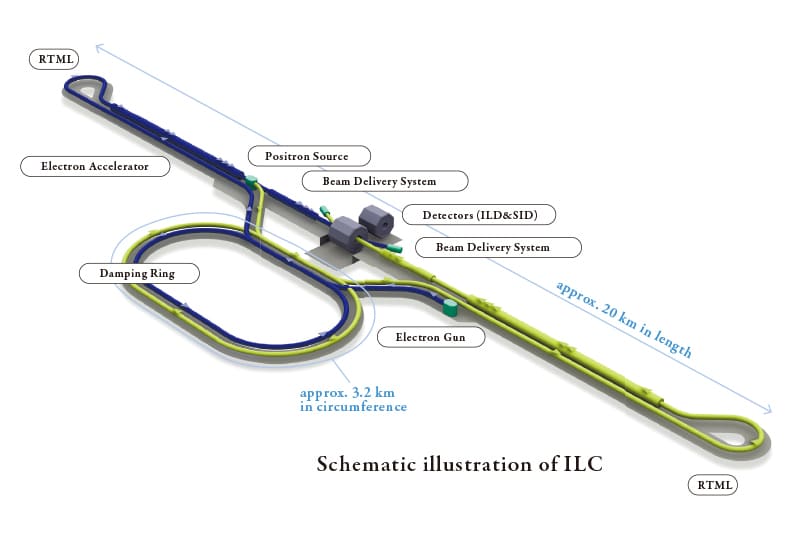
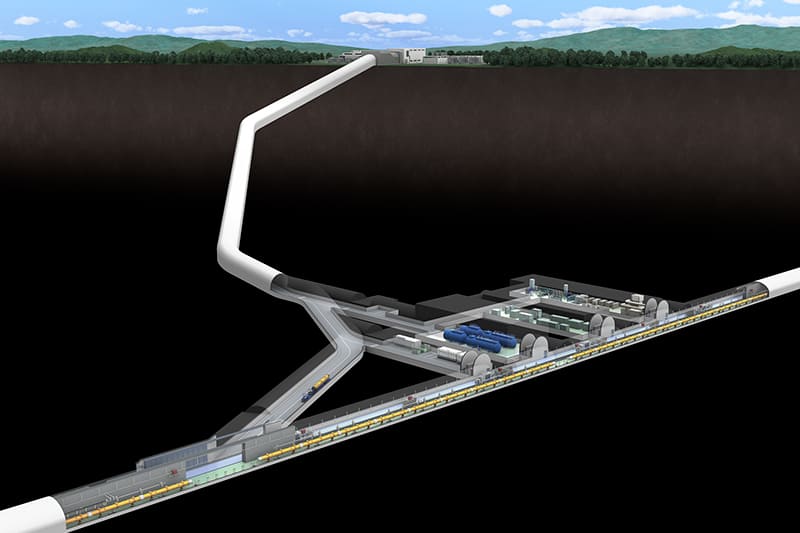
© REY.HORI / KEK
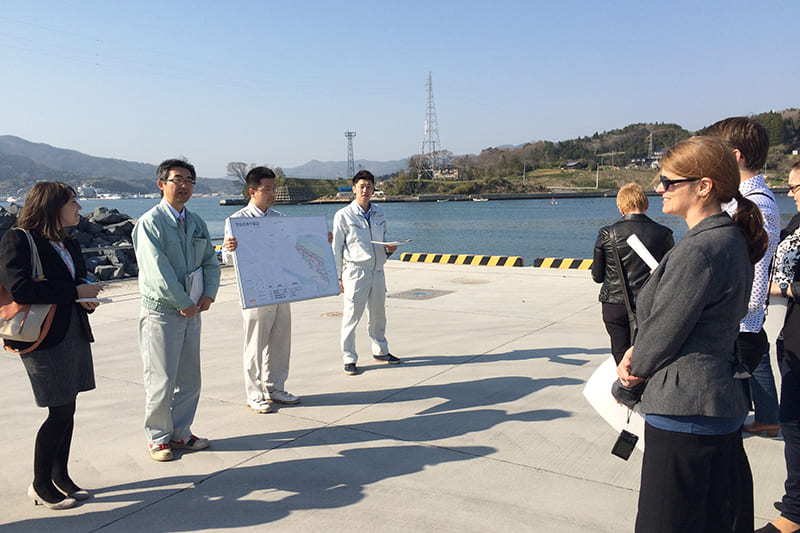
PHOTO: MINAMI NAKAWADA
Once the ILC is completed, a research hub similar to Tsukuba Science City in Ibaraki Prefecture will likely be born in Tohoku, with researchers and engineers gathering from all over the world. Research in elementary particle physics has already produced various technologies that are now essential to our lives. The World Wide Web used for the internet was invented from elementary particle research, and accelerator technology has produced medical diagnostic equipment such as X-rays and positron emission tomography (PET) scans, as well as particle beam therapy. Synchrotron radiation produced by accelerators is also used for drug discovery and the development of new materials. In this way, particle physics can contribute to a wide range of fields, and so if the ILC is built, it is expected that many companies will set up in the surrounding area and next-generation industries will develop. Of course, the construction and operation of the ILC will also create employment and training opportunities. The Nomura Research Institute estimates that employment opportunities for about 250,000 people will be created nationwide during the 30 years it is expected to take from construction to operation of the ILC.
While the ILC potentially has a bright future, there are significant hurdles to clear before it can be realized. The biggest problem is the huge construction cost, which is estimated at around ¥800 billion ($6 billion), half of which is to be borne by the host country, with the rest shared by participating countries. In fact, the Science Council of Japan (in 2013) and a Japanese government expert panel (in 2014) have both expressed lukewarm views on the project, citing uncertainties and issues such as the likely ¥400 billion cost to Japan. The COVID-19 pandemic and the war in Ukraine are also impeding progress. University of Tokyo professor Shoji Asai, who is a spokesperson for the ILC, explained: “There are two important points in this project. One is to study the Higgs boson and to unravel its mysteries, including the origins of the universe. There is consensus among researchers about this. The second point is that the research be conducted through a new model of international cooperation. The ILC project is progressing from a bottom-up approach, with researchers advocating for it to various countries and regions, so it is challenging.”
Japan is a world leader when it comes to elementary particle research. It has many Nobel Prize nominees and boasts world-class accelerator technology. One can only hope that the cost issue will be resolved and the ILC can one day usher in a new age of research in Tohoku.
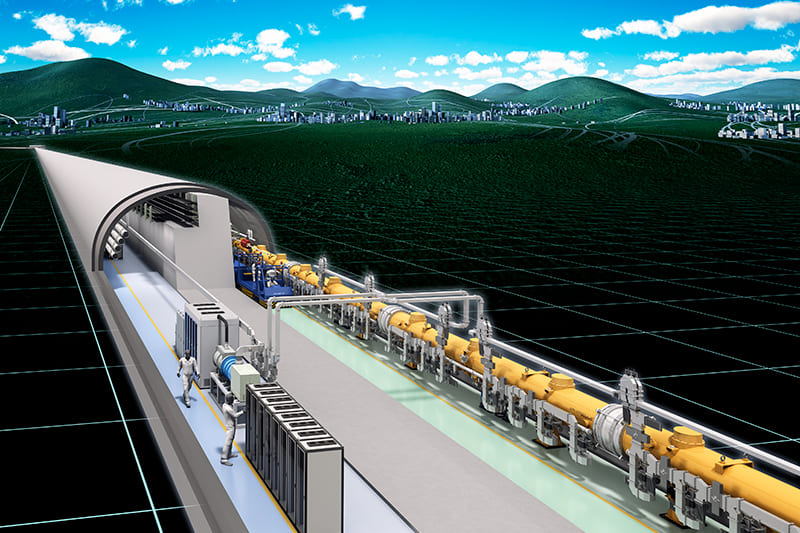
© REY.HORI / KEK
TIMELINE OF THE ILC PLAN
2004
The ICFA agrees to build the ILC. Candidate sites are selected (including Japan, Germany and the United States).
2011
In August, Iwate Prefecture includes the ILC concept in its Great East Japan Earthquake recovery plan.
2013
The ICFA decides on the Kitakami Mountains as the preferred construction site.
2013-14
The Science Council of Japan (2013) and a national panel of experts (2014) express the view that the costs are unclear and it is premature.
2019
The Japanese government announces that when proceeding with large-scale projects it is appropriate to proceed within the framework of a master plan formulated by the Science Council of Japan. Groups advocating the project apply to participate in the master plan process, but none are selected.
2021
Advocacy groups propose the establishment of the ILC Preparatory Research Institute. However, the government’s expert panel determines that it is premature because of the costs.
2022
The ICFA releases a statement saying it will “monitor developments over the next year.”
東北の地に計画されているILCを知っていますか?
岩手県の北上山地の地下100mに、国際的な研究施設建設の計画があるのをご存じだろうか? それが〈国際リニアコライダー(ILC)〉だ。直線型の加速器で長さは20kmにも及ぶ。ILCの目的のひとつは宇宙誕生の謎を解き明かすことだ。加速器の両側から素粒子を発生させ光速で正面衝突させる。すると宇宙創成1兆分の1秒後の「エネルギーのかたまり」が生み出される。ビッグバンの再現だ。そこで「ヒッグス粒子」などを観測することにより、どのようにして宇宙が生まれたのかを解明する。ILCの建設費用は約8000億円。半分を建設地となる日本が負担、残りは各参加国が分担する。
ILCのスポークスパーソンを務める浅井祥仁氏(東京大学教授)は「プロジェクトの重要な点は2つ。一つはヒッグス粒子を研究し宇宙誕生を含め謎を解き明かすこと。これは世界中の研究者の共通認識。もう一つがその研究を新しい形の国際協力で行う点。ILC計画は研究者からボトムアップで様々な国や地域に働きかけ、世界が協力して建設しようという挑戦的な取り組み」と語る。
Return to Sustainable Japan Magazine Vol. 21 article list page

